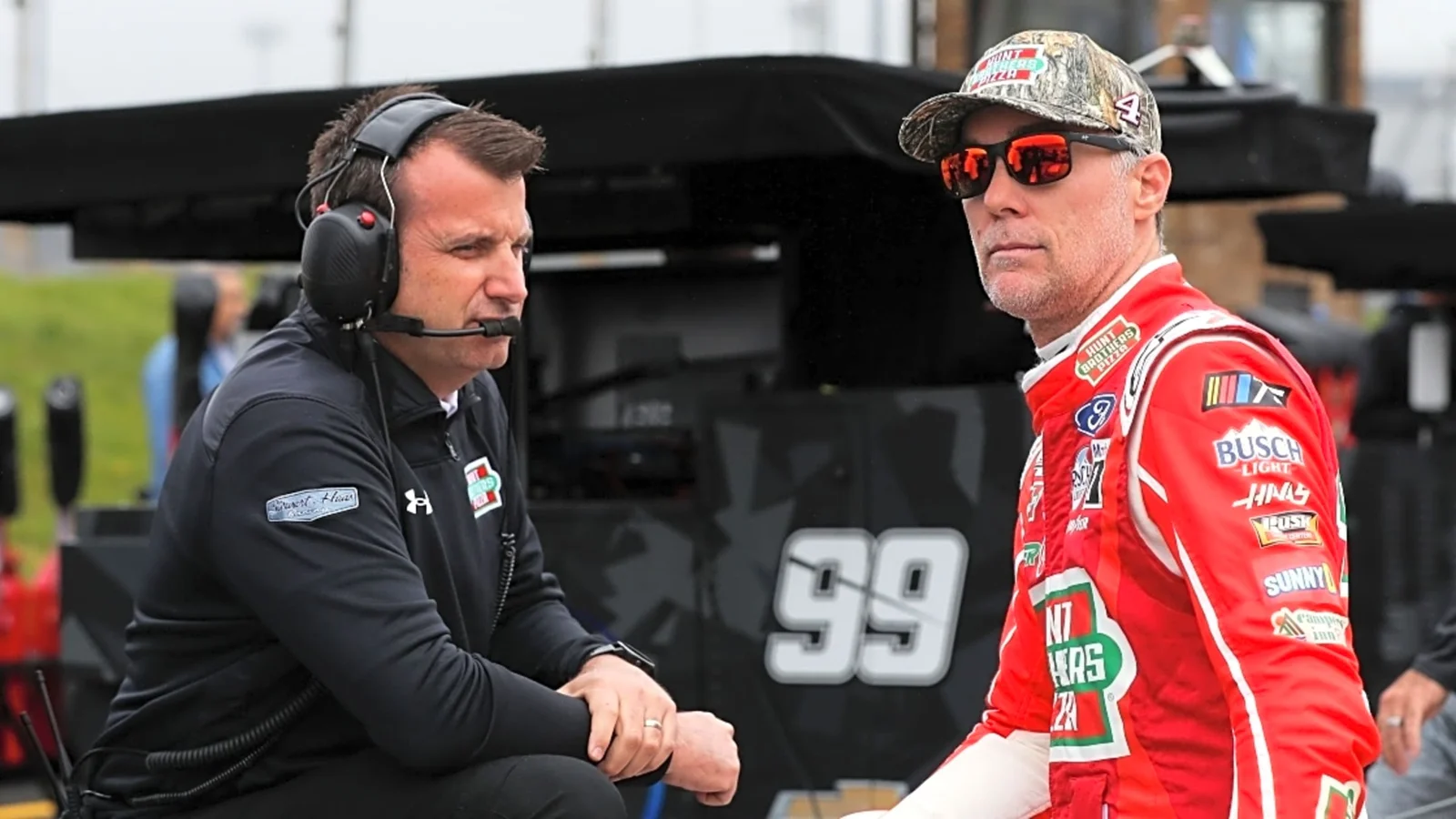In a recent interview aired on Fox, retired NASCAR driver Kevin Harvick made strong statements demanding a dramatic transformation of NASCAR’s next-generation vehicles, pushing for significant changes to revitalize the action on track. Harvick’s pointed criticism and demands for more excitement have reignited discussion over the direction of the racing series, as the community weighs his call for radical updates to the next-gen cars, making “Kevin Harvick next-gen demands” a hot topic among fans and insiders alike.
Harvick’s Frustrations with the Status Quo
The ongoing debate over improvements to NASCAR’s next-gen cars has taken center stage, with Kevin Harvick expressing disappointment at recent, moderate technical tweaks that yielded little noticeable impact for drivers. During his Fox interview with veteran motorsports journalist Bob Pockrass, Harvick didn’t mince words about the inability of subtle changes to address persistent issues.
“Everything that I’ve heard, they put it in, and the driver couldn’t even tell that they changed the horsepower,”
Kevin Harvick, Retired NASCAR Driver
This lack of perceivable difference behind the wheel left Harvick unsatisfied, intensifying his call for bolder solutions that would instantly alter the racing experience. Harvick underscored the need for more horsepower, urging fans and stakeholders to revisit past eras of the sport for inspiration.
“Go back and watch those old videos.”
Kevin Harvick, Retired NASCAR Driver
Arguing for More Power and Fiercer Competition
Harvick contends that next-gen cars must become faster and more demanding, rather than simply tinkering with small details. He explained that if NASCAR truly wants to excite both drivers and competition fans, it should abandon conservative changes in favor of a substantial power increase, leading to cars that present a consistent challenge at high speeds. However, this approach raises new questions—namely, whether the current tires and technology could handle such a marked leap in horsepower and performance.
The discussion between Harvick and Pockrass addressed the realities of such a transformation. While engine departments are reportedly open to developing new solutions, Harvick pointed out that they need sufficient timing and resources—requirements complicated by NASCAR’s existing economic approach to the Next-Gen platform. Pockrass countered that increased horsepower could raise operating costs, yet Harvick refuted the assumption that lower horsepower means lower expenses.
“When they lowered the horsepower, the price of the engines went up because the valve train becomes so important,”
Kevin Harvick, Retired NASCAR Driver
This unexpected engine bill increase, Harvick emphasized, revealed the limited financial gains from reduced performance, further calling into question the efficacy of recent changes.
Consequences of Lower Horsepower and Racing Dynamics
Harvick argued that a reduction in horsepower is directly responsible for making overtaking more difficult, stalling dynamic competition. He recalled that after the first major decrease in horsepower, passing quickly became a challenge, which frustrated both drivers and devoted competition fans.
“Cars immediately became harder to pass because of the corner speed.”
Kevin Harvick, Retired NASCAR Driver
The physics of modern next-gen cars allows them to grip the track through corners at high speed, creating significant “dirty air” wakes. This makes it harder for drivers to get side-by-side and stage dramatic passes—the very action fans crave. Harvick summarized his concern that while outright engine speed may not be necessary, cars should still be fast, difficult to control, and unmistakably the most thrilling vehicles in professional motorsport.
“I don’t think we need to turn the engines 10,000 RPM, but the cars need to go faster than they do today. They should be the fastest cars, and they’re hard to drive, don’t get me wrong.”
Kevin Harvick, Retired NASCAR Driver
He continued, explaining that each time NASCAR has reduced straightaway speeds but increased speed through corners, the product on track has suffered.
“But every time we’ve taken speed out of the straightaway and made the cars faster through the corners, it becomes harder to pass. It happened at the very first test when we took horsepower out the first time. Cars immediately became harder to pass because of the corner speed.”
Kevin Harvick, Retired NASCAR Driver
Implications for NASCAR’s Future
Harvick’s passionate plea for a new era of racing comes at a moment of reflection for NASCAR, as the league and engine departments evaluate the balance between cost and performance, and race fans call for more drama on the track. Although his vision might seem aggressive—even likened to an Ethan Hunt-style mission—the points he raises have echoes throughout the sport.
Addressing financial, technical, and competitive challenges, NASCAR must now decide whether to heed Harvick’s appeal, rethink its philosophies, and invest in the radical changes required to revive and energize the next generation of racing. The ongoing debate around Kevin Harvick next-gen demands, coupled with input from voices like Pockrass and other competition fans, will likely influence NASCAR’s decisions and the future spectacle of races to come.

